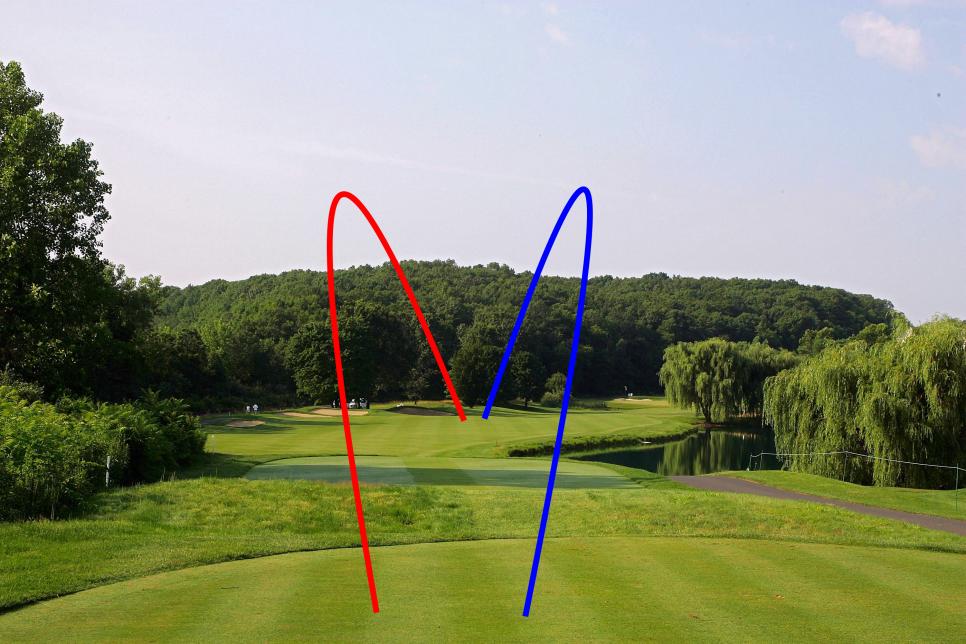Instruction
Why trying to hit straight shots isn’t the solution

A common trap in golf instruction is that we throw certain terms around without agreeing on the specific definition. Maybe the greatest of these misunderstandings is what instructors and pros mean by a straight shot. If the objective is trying to hit a shot as close to the target as possible, that’s worthwhile. But if it’s about hitting a shot with no curve, this could be a problem.
According to Michael Breed, one of Golf Digest’s top-ranked teachers, golfers who strive for perfectly straight shots without any curve are falling into a costly trap.
“Most of you struggle because you're chasing the perfect golf swing,” Breed said as recent host of a Golf Digest Happy Hour. “But the perfect golf swing isn't the same for everybody and it’s absolutely not a straight golf shot. When you understand what makes a ball curve and you play that shape, you will have a much more successful outcome in your quest for lower scores.”
Why straighter isn’t necessarily better
The reason that chasing straight shots is not ideal is that there is no margin for error. There are many variables that determine how a ball flies, but three of the most significant are club path, face angle and where on the face you hit the ball.

For a shot to fly perfectly straight, all three of those variables have to be exactly equal. “I must have the path coming into the ball square, I must have the face absolutely perpendicular to that path and I must hit the ball in the center of the face to hit a straight shot,” Breed says.
Get any of those three variables slightly off by just one degree and the ball will curve. Whether it will be a push draw, slight fade, pull draw, etc. is anyone’s guess. You can’t predict it. It’s why for even the best players in the world, hitting perfectly straight shots is not repeatable.
Why curve is not bad
While Breed says you need to be “absolutely perfect” to hit a straight shot, curving the ball takes far less precision. “A lot of people don't realize that when you curve the ball, you can be less perfect,” he says.
If club path and face angle need to be perfectly square to hit a straight shot, not so with a draw or a fade. Almost every player has a natural curve to their shots, although it’s understandable if it’s more curve than you would like. The predictability of this ball flight is why you’ll hear good players talk about their “preferred shot shape.”
If you’re playing for a perfectly straight shot and don’t pull it off, the ball will always be working away from your target. When you embrace curve and strive for a consistent shot shape, however, all you must do is aim right or left of your target, and you know the ball will curve back.

Michael Cohen
Take a tee shot on a hole with a 50-yard fairway, for example. Someone who is trying to hit a straight shot will aim up the middle and will have 25 yards of fairway on either side to hit it in. On the other hand, someone who hits a fade will aim up the left edge of the fairway, and knowing the ball with curve to the right, that golfer then has all 50 yards of fairway to work with. Twice as much margin for error.
To be clear, Breed is not saying you need to embrace excessive curve. If you fight a massive slice, trying to cut down on the amount of curve will likely help you hit better shots. But that’s not the same as saying you should try to hit the ball straight.
It’s a battle you can’t win, and you’ll scores will suffer. Instead, focus on embracing and improving on your preferred shot shape so you can be less perfect yet shoot lower scores.
For more from Breed, be sure to watch the complete recording of the Happy Hour here.




